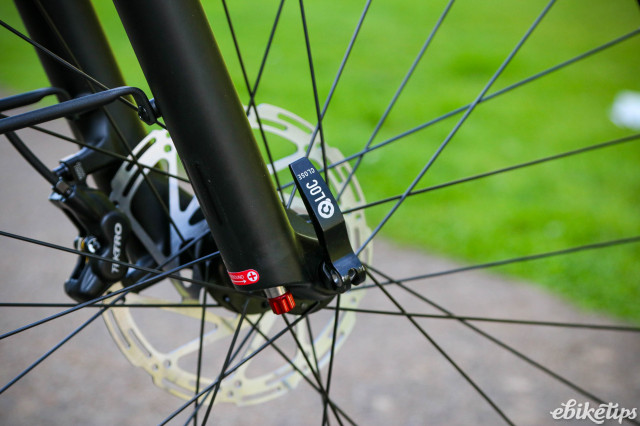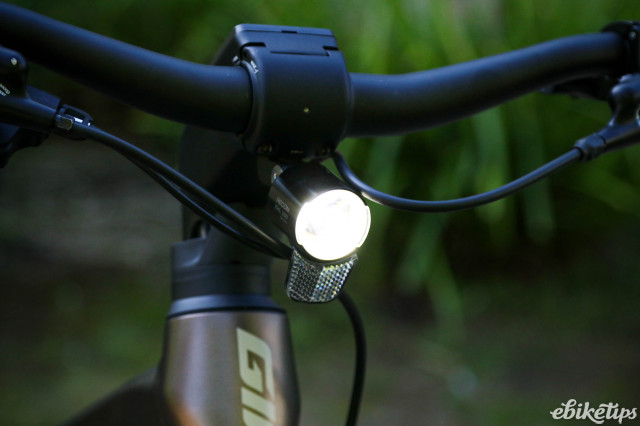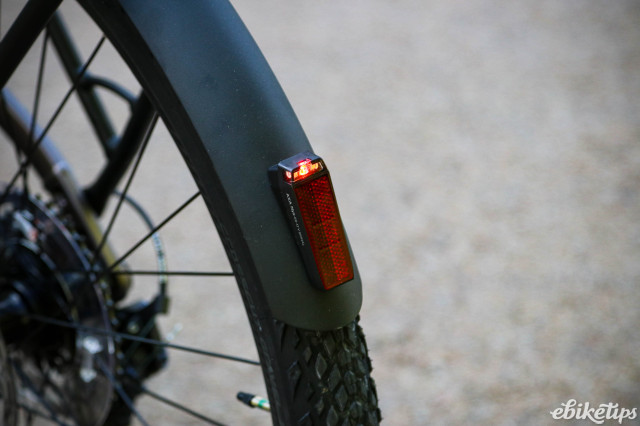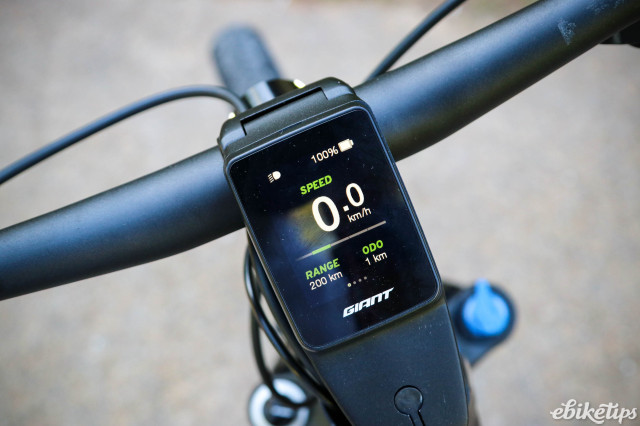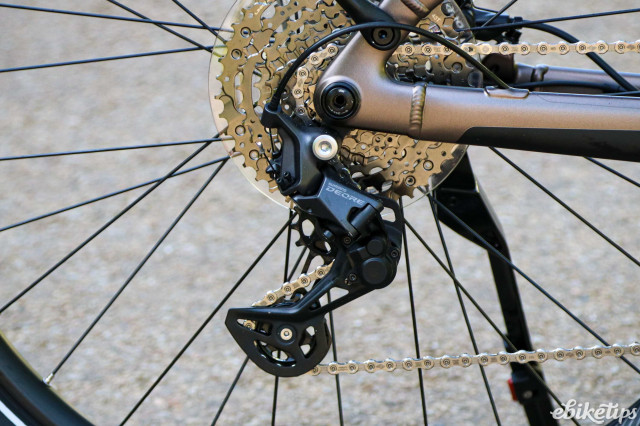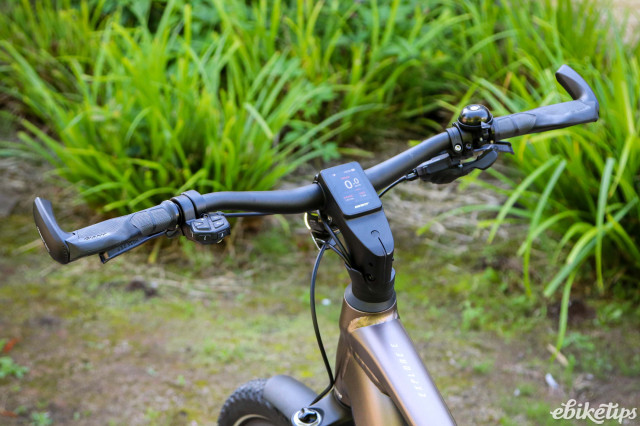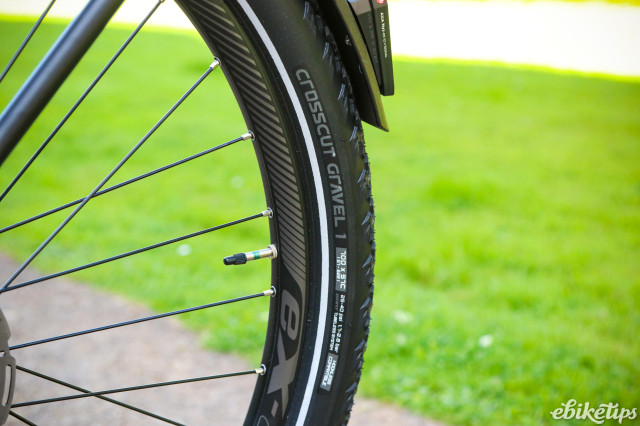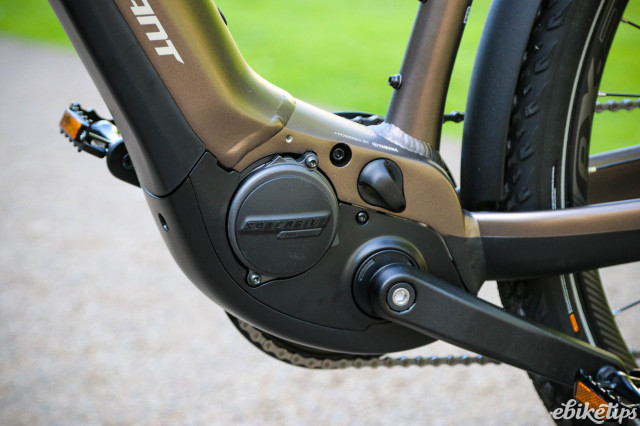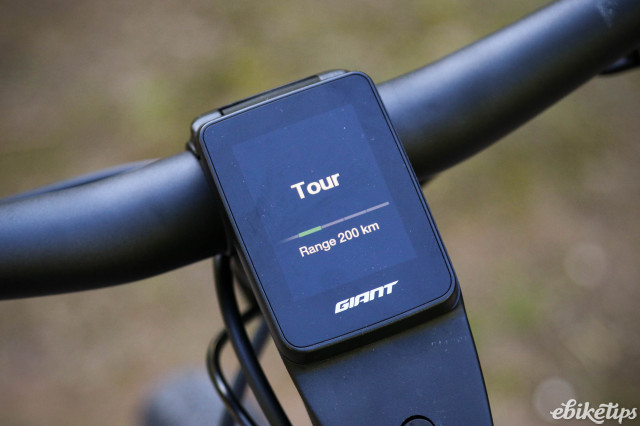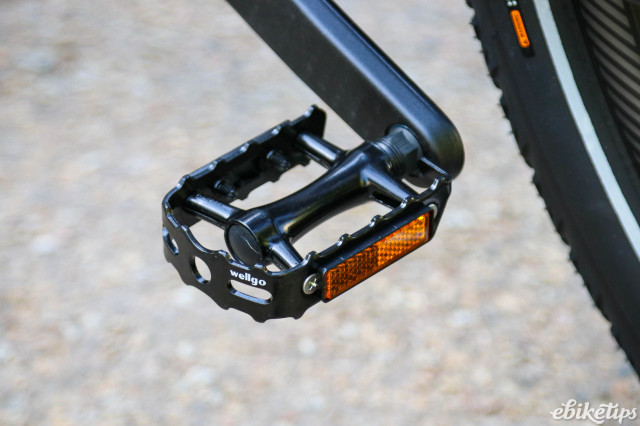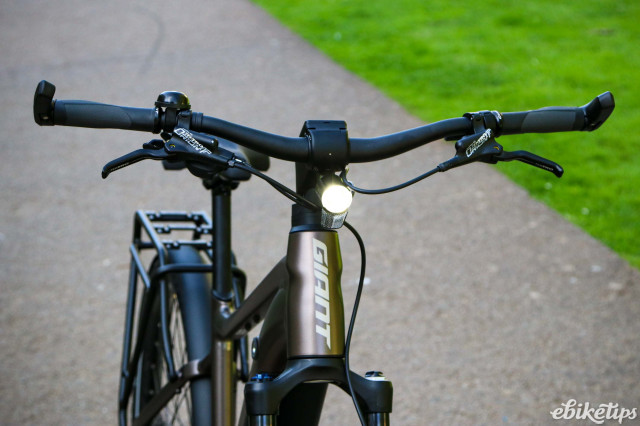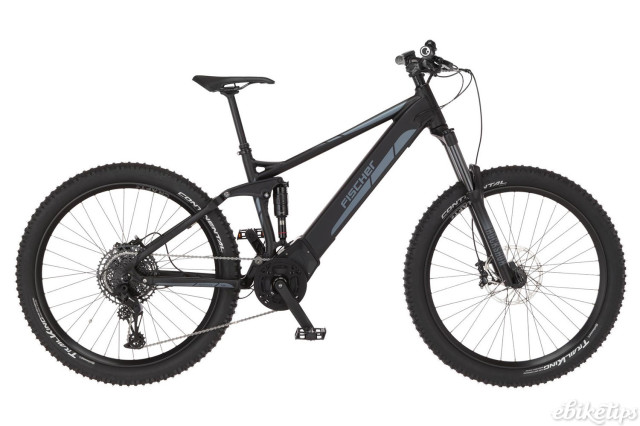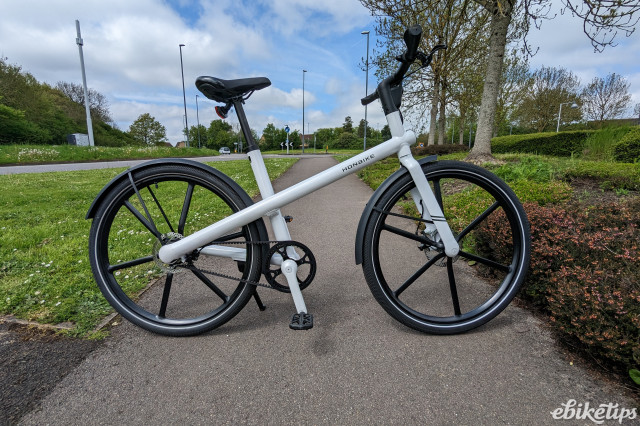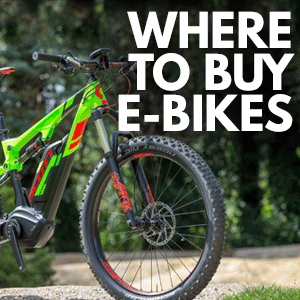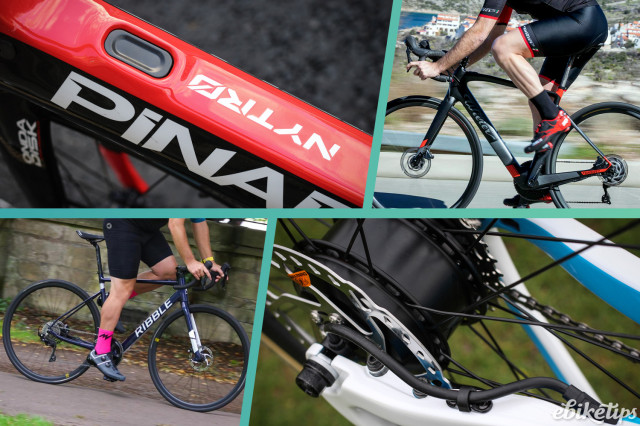Review: Giant Explore E+ Pro 1 GTS
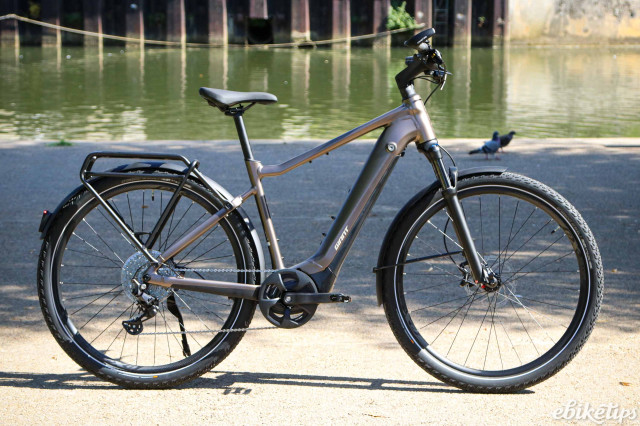
Overview
- Intuitive motor performance
- Well specced
- Very easy to ride with all terrain capability
- Front mudguard could be longer
The Giant Explore E+ Pro 1 GTS is a beauty to ride! It feels rock solid and stable on whatever terrain you are on, and it’s just so versatile. The best bit about it though is the motor system. It’s punchy yet very smooth and incredibly responsive – plus the battery range is phenomenal.
Frameset - tech specs
The Explore E+ Pro is based around an ALUXX aluminium alloy frame, available in two sizes of medium and large (other models are available in more sizes) – which according to Giant’s sizing chart should cover riders from 169cm to 186cm.
It’s a chunky looking beast with purposeful welds throughout, especially at the front end where the head, down and top tubes meet. It’s reassuring to see this belt ‘n’ braces approach though as the Explore sports a powerful motor and is capable of taking on some rough terrain. It’s a proper utilitarian bike and it gave me added confidence when negotiating high kerbs or even a section of subtle steps on the local canal path.
The SR Suntour XCR34 fork gives 100mm of travel when you need it and a hydraulic lock out keeps things rigid when you don’t.
Everything is integrated to keep the Explore looking as clean as possible, plus it cuts down on the chances of snagging a hose or cable on a piece of street furniture or branch. Other than the front brake hose everything is directed into the frame, and even the seatpost has been given the minimalistic look with an internal wedge system keeping everything secure.
The battery is hidden in the down tube, and even though the motor is bottom bracket mounted the frame design manages to keep everything looking smart. It’s obviously an e-bike to anyone giving it a glance, but nothing looks bolted on or an afterthought, exactly how it should be on a bike of this price.
Wheel retention is taken care of by thru axles which gives an extra feeling of security compared to cheaper e-bikes that are still using quick release, and you also get a couple of water bottle mounting points for those longer rides.
As you can see from the pics you get a sturdy rear rack and full mudguards, my only criticism with the latter being that the front guard could do with being longer to protect your shoes from road spray.
Lights are included too, as is a kickstand, so you are pretty much ready for everything out of the box – although if you want to ride on unlit roads or trails, you’ll need to add a beefier front light to the handlebar. The standard light is more of a ‘be seen’ rather than a ‘see by’ affair.
The rear light has a brake sensor which is a neat touch.
Everything electrical is operated by the RideControl Ergo 2 control unit on the handlebar which has simple to understand buttons which can be operated without moving your hand from the handlebar. All of your data and metrics are displayed on the RideDash Evo full colour display which is simple to read being positioned in line with the stem.
This display can show all kinds of metrics, including things like heart rate, alongside other options like speed, distance, battery life and range. It’ll also connect wirelessly to your smart phone, showing emails and messages etc.
This is one very well specced bike.
Componentry
Away from all of the gizmos you’ll find a 10-speed Shimano Deore partial groupset paired to a 1x chainset with a 46T narrow/wide chainring. The cassette has sprockets ranging from 11-43T.
The brakes are from Tektro, their HD-M745 Orion set up which mates 4-piston hydraulic calipers with 180mm disc rotors. On a bike of this weight, you definitely need some powerful brakes and that is exactly what you get here with minimal pressure needed at the levers.
The cockpit is an all Giant affair with the Contour Comfort Riser bar and Contour Evo integrated stem which has a 16° rise. The medium sized Explore gets an 80mm stem length while the large is fitted with a 100mm option.
Bar ends are a neat addition, giving you an extra hand position.
On an e-bike, I rarely get out of the saddle, so something comfortable and supportive is a must to eliminate pressure points and numbness. I found the Selle Royal Vivo Ergo offering to work well as the padding wasn’t overly thick, but it still provides a bit of compression for taking the sting out of the bumps.
Tyre clearance is impressive on the Explore, swallowing the 57mm wide Crosscut Gravel 1s with ease. Their width and lightly treaded pattern means they work well on loose terrains like gravel, but also roll well on the road too.
Being foldable rather than having a steel bead means that they have a reasonably supple feel, and they are tubeless ready too which takes the faff of fixing a puncture at the side of the road - although the chances of that happening are slim due to how robust this tyre is.
The wheels are solidly built and stood up well to the abuse they saw through testing, and to be honest that’s all you really want from a set of wheels on a bike like this.
Power plant
The Explore E+ Pro 1 GTS uses Giant’s SyncDrive Pro 2 (powered by Yamaha) which boasts 85Nm of torque. It’s paired with a Giant EnergyPak 800Wh battery.
And what a pairing it is.
In operation the SyncDrive motor is an absolute joy to use. Firstly, there is no lag in the system at all. Riding some cheap e-bikes with basic motors can feel a bit sketchy in traffic as there can be delays in the motor kicking in, or - even worse - to it cutting out due to lagging between it and what the cranks are up to.
This system uses six sensors to measure the power being put through the cranks which means it instantly responds to what your legs are doing. It also adjusts the amount of assistance required in response to your own output which makes it very smooth. There is none of that on or off malarky here – it’s so intuitive that you don’t feel the motor at all thanks to the natural feel of the power delivery.
Using the RideControl unit on the handlebar you can choose from five different assistance levels or use the Smart Assist automatic mode. If you want to customise things even more though, you can download the RideControl app which gives you even more control over how the motor responds. You can tweak the amount of power assistance available for each level, and even adjust the amount of torque on offer.
Fancy a bit of Formula 1 style launch control? You can tweak that too with a choice of seven levels of responsiveness. Lower levels are ideal for pulling away on loose surfaces, or use the highest level to give you full torque in milliseconds so that you can get away from the traffic lights without that bus breathing down your neck.
The app also stores ride data and can be used for navigation.
The best thing about this setup though is the huge battery range. The claims are up to 250km on its lowest setting and given perfect conditions.
For some real world conditions, I whacked the Explore into the highest of the five assistance levels and recorded a commute home from the office. The overall distance was 17.5 miles (28.1km) with 351m of climbing at an average moving speed of 17.3mph (27.8kph).
I used just 18% of the battery life which I thought was pretty impressive, especially as you can see by the overall average speed, I was exploiting all of the power and torque the motor had to offer on the climbs.
Taking a more relaxed approach, or using lower assistance levels, will give you loads of range and if your journeys are short you won’t need to get the charger out too often.
Giant supply this Explore with their 6A smart charger which will boost the battery by 60% in just three hours, which according to my smart meter will cost just 5p/h.
The ride
As you’d expect for this kind of bike it has quite an upright relaxed ride position, but I found that it worked really well. I did a couple of rides over an hour long and felt very comfortable throughout.
The position also means that you get a good view in traffic.
The Explore handles really well too for a big, heavy bike. Even at low speeds it cuts through the traffic easily and never feels twitchy or top heavy when making tight turns, carving through the usual urban environment, or negotiating railings to enter cycle paths.
Should you need to put a foot down, the low top tube allows you to do that easily and quickly lowers your centre of gravity to make the bike easier to control when you need to scoot.
At cruising speeds, the Explore feels really planted and when rolling along I felt confident leaning the bike into the bends and it even works well on the descents. The steering feels well balanced, quick enough to make technical turns but never twitchy.
This helps a lot when on gravel tracks or when loaded. This model is well set up for long distance touring or day rides.
As I mentioned earlier, the brakes work very well indeed, which also gives plenty of confidence when you let the bike go on a downhill. If you are off road or just want a plush ride, the fork works really well. It soaks up the bumps without feeling too soft, causing it to bob about.
If I’m honest, there really is not much else I can say about the actual ride – the Explore does everything really well and it’s one of the most complete, all-round ebikes I’ve ridden.
Pricing and competition
The Explore E+ range starts at £2,799 and tops out with the Pro 0 GTS at £4,199, with this bike sitting one below that at £3,799.
That’s a fair chunk of cash to spend on a bike, but as a package I think this Pro 1 GTS model is definitely worth it.
We are big fans of Specialized’s Turbo Vado range of bikes. I rode the 4.0 back in 2023 and Richard reviewed the SL 4.0 EQ the year before.
The range has had a bit of a revamp with the Vado SL only coming in two builds, one at £2,600 and the Vado SL 2.0 EQ being the closest in spec to the Giant. It costs £5,500 though.
The groupset is a slighter higher spec with a mixture of Deore XT and SLX, but like the Giant it comes with integrated systems, wide tyres for on and off-road use and plenty of extras like guards, a rack and lights.
The Specialized 1.2 SL motor system is frame mounted and delivers 50Nm of torque and a peak power of 320W. You get a 520Wh battery. All very good, but this Explore looks to have it licked on paper, although the Specialized is a much lighter bike.
Another similar bike to the Explore is Merida’s eSPRESSO. I rode the City version about 18 months ago and was overall impressed apart from a couple of small niggles.
The eSPRESSO CC range is more rugged though, like this Explore E+. The range topping CC 675 EQ comes with Shimano’s EP6 motor boasting 85Nm of torque and a 750Wh battery. It’s running 650b wheels with 2.25” wide tyres, plus you are getting all of the extras like lights, mudguards, rear rack and a kick stand. It’s priced at £4,000.
Another that may potentially be an option - although we can't yet confirm that - is the Tenways AGO X. It's a notch cheaper at £2,399 but with a smaller 504Wh battery. We'll take a look at that soon for you.
Conclusion
Overall, apart from that slightly short front mudguard I do not have a bad word to say about this Explore E+ model. It rides great, comes with a load of tech that works really and is built around a motor that is just awesome in real world conditions.












































